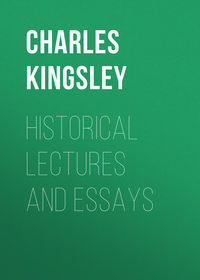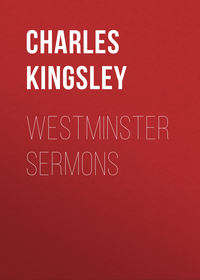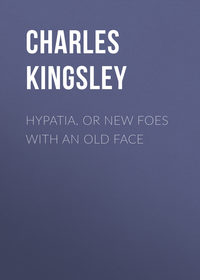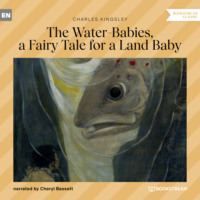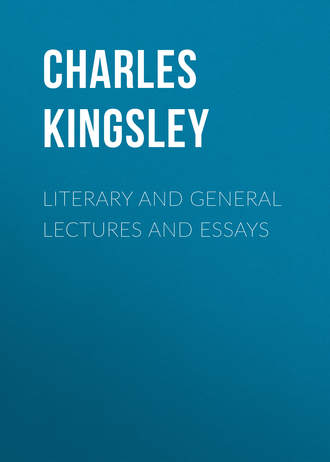 полная версия
полная версияLiterary and General Lectures and Essays
Michael Angelo rarely gave wings to his angels; I scarcely recollect an instance, except the angel in the “Annunciation:” and his exaggerated human forms, his colossal creatures, in which the idea of power is conveyed through attitude and muscular action, are, to my taste, worse than unpleasing. My admiration for this wonderful man is so profound that I can afford to say this. His angels are superhuman, but hardly angelic: and while in Raphael’s angels we do not feel the want of wings, we feel while looking at those of Michael Angelo that not even the “sail-broad vans” with which Satan laboured, through the surging abyss of chaos could suffice to lift those Titanic forms from earth, and sustain them in mid-air. The group of angels over the “Last Judgment,” flinging their mighty limbs about, and those that surround the descending figure of Christ in the “Conversion of St. Paul,” may be referred to here as characteristic examples. The angels, blowing their trumpets, puff and strain like so many troopers. Surely this is not angelic: there may be power—great, imaginative, and artistic power—exhibited in the conception of form, but in the beings themselves there is more of effort than of power: serenity, tranquillity, beatitude, ethereal purity, spiritual grace, are out of the question.
In this passage we may remark an excellence in Mrs. Jameson’s mode of thought which has become lately somewhat rare. We mean a freedom from that bigoted and fantastic habit of mind which leads nowadays the worshippers of high art to exalt the early schools to the disadvantage of all others, and to talk as if Christian painting had expired with Perugino. We were much struck with our authoress’s power of finding spiritual truth and beauty in Titian’s “Assumption,” one of the very pictures in which the “high-art” party are wont to see nothing but “coarseness” and “earthliness” of conception. She, having, we suppose, a more acute as well as a more healthy eye for the beautiful and the spiritual, and therefore able to perceive its slightest traces wherever they exist, sees in those “earthly” faces of the great masters, “an expression caught from beholding the face of our Father that is in heaven.” The face of one of those “angels,” she continues, “is to the face of a child just what that of the Virgin in the same picture is compared with the fairest of the daughters of earth: it is not here superiority of beauty, but mind, and music, and love, kneaded, as it were, into form and colour.”
Mrs. Jameson acknowledges her great obligations to M. Rio; and all students of art must be thankful to him for the taste, learning, and earnest religious feeling which he has expended on the history of the earlier schools of painting. An honest man, doubtless, he is; but it does not follow, alas! in this piecemeal world, that he should write an honest book. And his bigotry stands in painful contrast to the genial and comprehensive spirit by which Mrs. Jameson seems able to appreciate the specific beauties of all schools and masters. M. Rio’s theory (and he is the spokesman of a large party) is, unless we much misjudge him, this—that the ante-Raphaelic is the only Christian art; and that all the excellences of these early painters came from their Romanism; all their faults from his two great bugbears—Byzantinism and Paganism. In his eyes, the Byzantine idea of art was Manichean; in which we fully coincide, but add, that the idea of the early Italian painters was almost equally so: and that almost all in them that was not Manichean they owe not to their Romanism or their asceticism, but to their healthy layman’s common sense, and to the influence of that very classical art which they are said to have been pious enough to despise. Bigoted and ascetic Romanists have been, in all ages, in a hurry to call people Manicheans, all the more fiercely because their own consciences must have hinted to them that they were somewhat Manichean themselves. When a man suspects his own honesty, he is, of course, inclined to prove himself blameless by shouting the loudest against the dishonesty of others. Now M. Rio sees clearly and philosophically enough what is the root of Manicheanism—the denial that that which is natural, beautiful, human, belongs to God. He imputes it justly to those Byzantine artists who fancied it carnal to attribute beauty to the Saviour or to the Virgin Mary, and tried to prove their own spirituality by representing their sacred personages in the extreme of ugliness and emaciation, though some of the specimens of their painting which Mrs. Jameson gives proves that this abhorrence of beauty was not so universal as M. Rio would have us believe. We agree with him that this absurdity was learned from them by earlier and semi-barbarous Italian artists, that these latter rapidly escaped from it, and began rightly to embody their conceptions in beautiful forms; and yet we must urge against them, too, the charge of Manicheanism, and of a spiritual eclecticism also, far deeper and more pernicious than the mere outward eclecticism of manner which has drawn down hard names on the school of the Caracci.
For an eclectic, if it mean, anything, means this—one who, in any branch of art or science, refuses to acknowledge Bacon’s great law, “that nature is only conquered by obeying her;” who will not take a full and reverent view of the whole mass of facts with which he has to deal, and from them deducing the fundamental laws of his subject, obey them whithersoever they may lead; but who picks and chooses out of them just so many as may be pleasant to his private taste, and then constructs a partial system which differs from the essential ideas of nature, in proportion to the number of facts which he has determined to discard. And such a course was pursued in the art by the ascetic painters between the time of Giotto and Raphael. Their idea of beauty was a partial and a Manichean one; in their adoration for a fictitious “angelic nature,” made up from all which is negative in humanity, they were prone to despise all by which man is brought in contact with this earth—the beauties of sex, of strength, of activity, of grandeur of form; all, that is, in which Greek art excels: their ideal of beauty was altogether effeminate. They prudishly despised the anatomic study of the human figure, of landscape and chiaroscuro. Spiritual expression with them was everything; but it was only the expression of the passive spiritual faculties of innocence, devotion, meekness, resignation—all good, but not the whole of humanity. Not that they could be quite consistent in their theory. They were forced to paint their very angels as human beings; and a standard of human beauty they had to find somewhere; and they found one, strange to say, exactly like that of the old Pagan statues (wings and all—for the wings of Christian angels are copied exactly from those of Greek Genii), and only differing in that ascetic and emasculate tone, which was peculiar to themselves. Here is a dilemma which the worshippers of high art have slurred over. Where did Angelico de Fiesole get the idea of beauty which dictated his exquisite angels? We shall not, I suppose, agree with those who attribute it to direct inspiration, and speak of it as the reward of the prayer and fasting by which the good monk used to prepare himself for painting. Must we then confess that he borrowed his beauties from the faces of the prettiest nuns with whom he was acquainted? That would be sad naturalism; and sad eclecticism too, considering that he must have seen among his Italian sisters a great many beauties of a very different type from that which he has chosen to copy; though, we suppose, of God’s making equally with that of his favourites. Or did he, in spite of himself, steal a side-glance now and then at some of the unrivalled antique statues of his country, and copy on the sly any feature or proportion in them which was emasculate enough to be worked into his pictures? That, too, is likely enough; nay, it is certain. We are perfectly astonished how any draughtsman, at least how such a critic as M. Rio, can look at the early Italian painters without tracing everywhere in them the classic touch, the peculiar tendency to mathematic curves in the outlines, which is the distinctive peculiarity of Greek art. Is not Giotto, the father of Italian art, full of it in every line? Is not Perugino? Is not the angel of Lorenzo Credi in Mrs. Jameson’s woodcut? Is not Francia, except just where he is stiff, and soft, and clumsy? Is not Fra Angelico himself? Is it not just the absence of this Greek tendency to mathematical forms in the German painters before Albert Dürer, which makes the specific difference, evident to every boy, between the drawing of the Teutonic and Italian schools?
But if so, what becomes of the theory which calls Pagan art by all manner of hard names? which dates the downfall of Christian art from the moment when painters first lent an eye to its pernicious seductions? How can those escape the charge of eclecticism, who, without going to the root-idea of Greek art, filched from its outside just as much as suited their purpose? And how, lastly, can M. Rio’s school of critics escape the charge of Manichean contempt for God’s world and man, not as ascetics have fancied him, but as God has made him, when they think it a sufficient condemnation of a picture to call it naturalistic; when they talk and act about art as if the domain of the beautiful were the devil’s kingdom, from which some few species of form and elements were to be stolen by Christian painters, and twisted from their original evil destination into the service of religion?
On the other hand, we owe much to those early ascetic painters; their works are a possession for ever. No future school of religious art will be able to rise to eminence without taking full cognisance of them, and learning from them their secret. They taught artists, and priests, and laymen too, that beauty is only worthy of admiration when it is the outward sacrament of the beauty of the soul within; they helped to deliver men from that idolatry to merely animal strength and loveliness into which they were in danger of falling in ferocious ages, and among the relics of Roman luxury; they asserted the superiority of the spirit over the flesh; according to their light, they were faithful preachers of the great Christian truth, that devoted faith, and not fierce self-will, is man’s glory. Well did their pictures tell to brutal peasant, and to still more brutal warrior, that God’s might was best shown forth, not in the elephantine pride of a Hercules, or the Titanic struggles of a Laocoon, but in the weakness of martyred women, and of warriors who were content meekly to endure shame and death, for the sake of Him who conquered by sufferings, and bore all human weaknesses; who “was led as a lamb to the slaughter, and, like a sheep dumb before the shearer, opened not his mouth.”
We must conclude with a few words on one point on which we differ somewhat from Mrs. Jameson—the allegoric origin of certain legendary stories. She calls the story of the fiend, under the form of a dragon, devouring St. Margaret, and then bursting at the sign of the cross while the saint escaped unhurt, “another form of the familiar allegory—the power of Sin overcome by the power of the Cross.”
And again, vol. ii. p. 4:
The legend of St. George came to us from the East; where, under various forms, as Apollo and the Python, as Bellerophon and the Chimæra, as Perseus and the Sea-monster, we see perpetually recurring the mythic allegory by which was figured the conquest achieved by beneficent Power over the tyranny of Wickedness, and which reappears in Christian art in the legends of St. Michael and half a hundred other saints.
To us these stories seem to have had by no means an allegorical, but rather a strictly historic foundation; and our reasons for this opinion may possibly interest some readers.
Allegory, strictly so called, is the offspring of an advanced, and not of a semi-barbarous state of society. Its home is in the East—not the East of barbarous Pontine countries peopled by men of our own race, where the legend of St. George is allowed to have sprung up, but of the civilised, metaphysical, dark-haired races of Egypt, Syria, and Hindostan. The “objectivity” of the Gothic mind has never had any sympathy with it. The Teutonic races, like the earlier Greeks, before they were tinctured with Eastern thought, had always wanted historic facts, dates, names, and places. They even found it necessary to import their saints; to locate Mary Magdalene at Marseilles, Joseph of Arimathea at Glastonbury, the three Magi at Cologne, before they could thoroughly love or understand them. Englishmen especially cannot write allegories. John Bunyan alone succeeded tolerably, but only because his characters and language were such as he had encountered daily at every fireside and in. every meeting-house. But Spenser wandered perpetually away, or rather, rose up from his plan into mere dramatic narrative. His work and other English allegories, are hardly allegoric at all, but rather symbolic; spiritual laws in them are not expressed by arbitrary ciphers, but embodied in imaginary examples, sufficiently startling or simple to form a plain key to other and deeper instances of the same law. They are analogous to those symbolic devotional pictures in which the Madonna and saints of all ages are grouped together with the painter’s own contemporaries—no allegories at all, but the plain embodiment of a fact in which the artist believed; not only “the communion of all saints,” but also their habit of assisting, often in visible form, the Christians of his own time.
These distinctions may seem over-subtle, but our meaning will surely be plain to anyone who will compare “The Faërie Queen,” or the legend of St. George, with the Gnostic or Hindoo reveries, and the fantastic and truly Eastern interpretation of Scripture, which the European monks borrowed from Egypt. Our opinion is, that in the old legends the moral did not create the story, but the story the moral; and that the story had generally a nucleus of fact within all its distortions and exaggerations. This holds good of the Odinic and Grecian myths; all are now more or less inclined to believe that the deities of Zeus’s or Odin’s dynasties were real conquerors or civilisers of flesh and blood, like the Manco Capac of the Peruvians, and that it was around records of their real victories over barbarous aborigines, and over the brute powers of nature, that extravagant myths grew up, till more civilised generations began to say: “These tales must have some meaning—they must be either allegories or nonsense;” and then fancied that in the remaining thread of fact they found a clue to the mystic sense of the whole.
Such, we suspect, has been the history of St. George and the Dragon, as well as of Apollo and the Python. It is very hard to have to give up the dear old dragon who haunted our nursery dreams, especially when there is no reason for it. We have no patience with antiquaries who tell us that the dragons who guarded princesses were merely “the winding walls or moats of their castles.” What use then, pray, was there in the famous nether garment with which Regnar Lodbrog (shaggy-trousers) choked the dragon who guarded his lady-love? And Regnar was a real piece of flesh and blood, as King Ælla and our Saxon forefathers found to their cost; his awful death-dirge, and the effect which it produced, are well known to historians. We cannot give up Regnar’s trousers, for we suspect the key to the whole dragon-question is in the pocket of them.
Seriously, Why should not those dragons have been simply what the Greek word dragon means—what the earliest romances, the Norse myths, and the superstitions of the peasantry in many parts of England to this day assert them to have been—“mighty worms,” huge snakes? All will agree that the Python, the representative in the old world of the Boa-constrictor of the new, lingered in the Homeric age, if not later, both in Greece and in Italy. It existed on the opposite coast of Africa (where it is now extinct) in the time of Regulus; we believe, from the traditions of all nations, that it existed to a far later date in more remote and barbarous parts of Europe. There is every reason to suppose that it still lingered in England after the invasion of the Cymri—say not earlier than B.C. 600—for it was among them an object of worship; and we question whether they would have been likely to have adored a foreign animal, and, as at Abury, built enormous temples in imitation of its windings, and called them by its name.
The only answer to these traditions has as yet been, that no reptile of that bulk is known in cold climates. Yet the Python still lingers in the Hungarian marshes. A few years ago a huge snake, as large as the Pythons of Hindostan, spread havoc among the flocks and terror among the peasantry. Had it been Ariosto’s “Orc,” an à priori argument from science would have had weight. A marsupiate sea-monster is horribly unorthodox; and the dragon, too, has doubtless been made a monster of, but most unjustly: his legs have been patched on by crocodile-slaying crusaders, while his wings—where did they come from? From the traditions of “flying serpents,” which have so strangely haunted the deserts of Upper Egypt from the time of the old Hebrew prophets, and which may not, after all, be such lies as folk fancy. How scientific prigs shook with laughter at the notion of a flying dragon! till one day geology revealed to them, in the Pterodactylus, that a real flying dragon, on the model of Carlo Crivelli’s in Mrs. Jameson’s book, with wings before and legs behind, only more monstrous than that, and than all the dreams of Seba and Aldrovandus (though some of theirs, to be sure, have seven heads), got its living once on a time in this very island of England! But such is the way of this wise world! When Le Vaillant, in the last century, assured the Parisians that he had shot a giraffe at the Cape, he was politely informed that the giraffe was fabulous, extinct—in short, that he lied; and now, behold! the respectable old unicorn (and good Tories ought to rejoice to hear it) has been discovered at last by a German naturalist, Von Müller, in Abyssinia, just where our fathers told us to look for it! And why should we not find the flying serpent too? The interior of Africa is as yet an unknown world of wonders; and we may yet discover there, for aught we know, the descendants of the very satyr who chatted with St. Anthony.
No doubt the discovery of huge fossil animals, as Mrs. Jameson says, on the high authority of Professor Owen, may have modified our ancestors’ notions of dragons: but in the old serpent worship we believe the real explanation of these stories is to be found. There is no doubt that human victims, and even young maidens, were offered to these snake-gods; even the sunny mythology of Greece retains horrible traces of such customs, which lingered in Arcadia, the mountain fastness of the old and conquered race. Similar cruelties existed among the Mexicans; and there are but too many traces of it throughout the history of heathendom.
The same superstition may, as the legends assert, have lingered on, or been at least revived during the later ages of the empire, in remote provinces, left in their primeval barbarism, at the same time that they were brutalised by the fiendish exhibitions of the Circus, which the Roman governors found it their interest to introduce everywhere. Thus the serpent became naturally regarded as the manifestation of the evil spirit by Christians as well as by the old Hebrews; thus, also, it became the presiding genius of the malaria and fever which arose from the fens haunted by it—a superstition which gave rise to the theory that the tales of Hercules and the Hydra, Apollo and the mud-Python, St. George and the Dragon, were sanitary-reform allegories, and the monsters whose poisonous breath destroyed cattle and young maidens only typhus and consumption. We see no reason why early Christian heroes should not have actually met with such snake-gods, and felt themselves bound, like Southey’s Madoc, or Daniel in the old rabbinical story, whose truth has never been disproved, to destroy the monsters at all risk. We see no reason, either, why their righteous daring may not have been crowned with victory; and suspect that on such events were gradually built up the dragon-slaying legends which charmed all Europe, and grew in extravagances and absurdities, till they began to degenerate into the bombast of the “Seven Champions,” and expired in the immortal ballad of the “Dragon of Wantley,” in which More of More Hall, on the morning of his battle with the monster, invoked the saints no more, but—
To make him strong and mighty—He drank by the taleSix pots of aleAnd a quart of aqua-vitæ.So ended the sublime sport of dragon-slaying. Its only remnant may now be seen in Borneo, whither that noble Christian man, Bishop Macdougall, took out the other day a six-chambered rifle, on the ground that “while the alligators ate his school-children at Sarawak, it was his duty as a bishop to shoot the alligators.”
ON ENGLISH COMPOSITION
Introductory Lectures given at Queen’s College, London, 1848.
An introductory lecture on English composition is, I think, as much needed as one on any other subject taught in this College. For in the first place, I am not sure whether we all mean the same thing when we speak of English composition; and in the next place, I believe that pupils themselves are very often best able to tell their teachers what sort of instruction they require. I purpose therefore to-day, not only to explain freely my intentions with regard to this course of lectures, but to ask you to explain freely your own wants.
I must suppose, however, that the ladies who attend here wish to be taught how to write English better. Now the art of writing English is, I should say, the art of speaking English, and speech may be used for any one of three purposes: to conceal thought, as the French diplomatist defined its use; to conceal the want of thought, as the majority of popular writers and orators seem nowadays to employ it; or, again, to express thought, which would seem to have been the original destination of the gift of language. I am therefore, I suppose, in duty bound to take for granted that you come here to be taught to express your thoughts better.
The whole matter then will very much depend on what thoughts you have to express. For the form of the symbol must depend on the form of the thing symbolised, as the medal does upon its die; and thus style and language are the sacraments of thoughts, the outward and visible signs of the inward and spiritual grace, or want of grace, in the writer. And even where language is employed to conceal either thought, or want thereof, it generally tells a truer tale than it was meant to do. Out of the abundance of the heart the mouth must speak, and the hollowness or foolishness of the spirit will show itself, in spite of all cunning sleights, in unconscious peculiarities or defects of style.
Hence I say style, as the expression of thought, will depend entirely on what there is within to be expressed, on the character of the writer’s mind and heart. We all allow this implicitly in the epithets which we apply to different styles. We talk of a vigorous, a soft, a weak, a frigid, an obscure style, not meaning that the words and sentences in themselves are vigorous, soft, weak, or even obscure (for the words and their arrangement may be simple enough all the while). No, you speak of the quality of the thoughts conveyed in the words; that a style is powerful, because the writer is feeling and thinking strongly and clearly; weak or frigid, because his feelings on the subject have been weak or cold; obscure to you, because his thoughts have been obscure to himself—because, in short, he has not clearly imagined to himself the notion which he wishes to embody. The meaning of the very words “expression” and “composition” prove the truth of my assertion. Expression is literally the pressing out into palpable form that which is already within us, and composition, in the same way, is the composing or putting together of materials already existing—the form and method of the composition depend mainly on the form and quality of the materials. You cannot compose a rope of sand, or a round globe of square stones—and my friend Mr. Strettell will tell you, in his lectures on grammar, that words are just as stubborn and intractable materials as sand or stone, and that we cannot alter their meaning or value a single shade, for they derive that meaning from a higher fountain than the soul of man, from the Word of God, the fount of utterance, who inspires all true and noble thought and speech—who vindicated language as His own gift, and man’s invention, in that miracle of the day of Pentecost. And I am bound to follow up Mr. Strettell’s teaching by telling you that what holds true of words, and of their grammatic and logical composition, holds true also of their æsthetic and artistic composition, of style, of rhythm, of poetry, and oratory. Every principle of these which is true and good, that is, which produces beauty, is to be taken as an inspiration from above, as depending not on the will of man but of God; not on any abstract rules, of pedant’s invention, but on the eternal necessities and harmony, on the being of God Himself.








